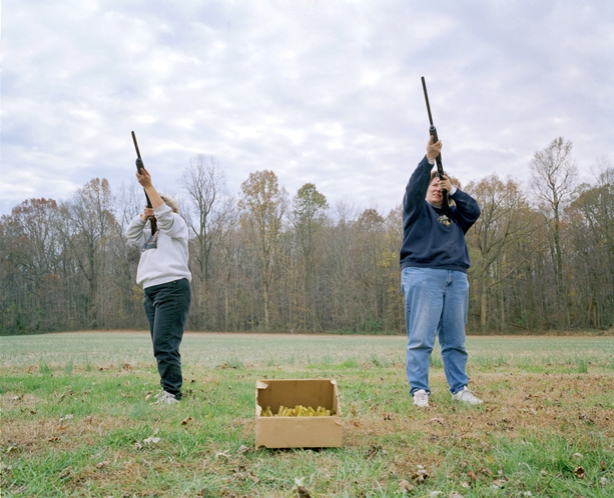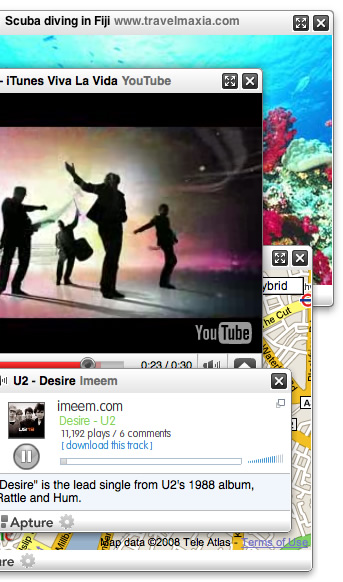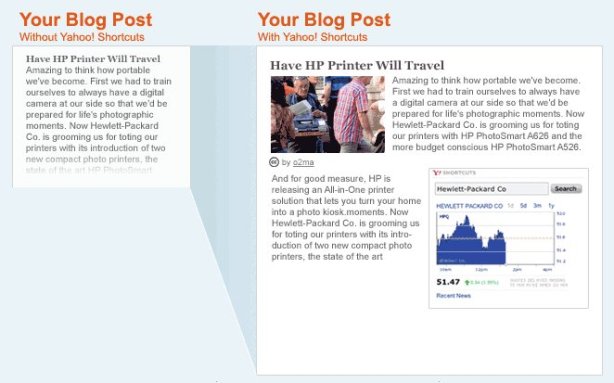I received an email today from Starhawk, born a Jew in the US and long-term peace activist who many times has been to Palestine to support the people there against constant Israeli state terror. In this mail she reflects not only on the homeland myth she was raised with but also on the need for Israel to atone rather then to continue to practice mass-murder, ethnic cleansing and contempt for another people. It’s a passionate piece written with honesty and compassion. (And follow one of the practical actions suggested at the end of the mail!)
[images inserted by me]
Dear friends,
All day I’ve been thinking about Gaza, listening to reports on NPR, following the news on the internet when I can spare a moment. I’ve been thinking about the friends I made there four years ago, and wondering how they are faring, and imagining their terror as the bombs fall on that giant, open-air prison.
The Israeli ambassador speaks movingly of the terror felt by Israeli children as Hamas rockets explode in the night. I agree with him—that no child should have her sleep menaced by rocket fire, or wake in the night fearing death.
But I can’t help but remember one night on the Rafah border, sleeping in a house close to the line, watching the children dive for cover as bullets thudded into the walls. There was a shell-hole in the back room they liked to jump through into the garden, which at that time still held fruit trees and chickens. Their mother fed me eggs, and their grandmother stuffed oranges into my pockets with the shy pride every gardener shares.
That house is gone, now, along with all of its neighbors. Those children wake in the night, every night of their lives, in terror. I don’t know if they have survived the hunger, the lack of medical supplies, the bombs. I only know that they are children, too.
I’ve ridden on busses in Israel. I understand that gnawing fear, the squirrely feeling in the pit or your stomach, how you eye your fellow passengers wondering if any of them are too thick around the middle. Could that portly fellow be wearing a suicide belt, or just too many late night snacks of hummus? That’s no way to live.
But I’ve also walked the pock-marked streets of Rafah, where every house bears the scars of Israeli snipers, where tanks prowled the border every night, where children played in the rubble, sometimes under fire, and this was all four years ago, when things were much, much better there.
And I just don’t get it. I mean, I get why suicide bombs and homemade rockets that kill innocent civilians are wrong. I just don’t get why bombs from F16s that kill far more innocent civilians are right. Why a kid from the ghetto who shoots a cop is a criminal, but a pilot who bombs a police station from the air is a hero.
Is it a distance thing? Does the air or the altitude confer a purifying effect? Or is it a matter of scale? Individual murder is vile, but mass murder, carried out by a state as an aspect of national policy, that’s a fine and noble thing?
I don’t get how my own people can be doing this. Or rather, I do get it. I am a Jew, by birth and upbringing, born six years after the Holocaust ended, raised on the myth and hope of Israel. The myth goes like this:
“For two thousand years we wandered in exile, homeless and persecuted, nearly destroyed utterly by the Nazis. But out of that suffering was born one good thing—the homeland that we have come back to, our own land at last, where we can be safe, and proud, and strong.”
That’s a powerful story, a moving story. There’s only one problem with it—it leaves the Palestinians out. It has to leave them out, for if we were to admit that the homeland belonged to another people, well, that spoils the story.
The result is a kind of psychic blind spot where the Palestinians are concerned. If you are truly invested in Israel as the Jewish homeland, the Jewish state, then you can’t let the Palestinians be real to you. It’s like you can’t really focus on them. Golda Meir said, “The Palestinians, who are they? They don’t exist.” We hear, “There is no partner for peace,” “There is no one to talk to.”
 And so Israel, a modern state with high standards of hygiene, a state rooted in a religion that requires washing your hands before you eat and regular, ritual baths, builds settlements that don’t bother to construct sewage treatment plants. They just dump raw sewage onto the Palestinian fields across the fence, somewhat like a spaceship ejecting its wastes into the void. I am truly not making this up—I’ve seen it, smelled it, and it’s a known though shameful fact. But if the Palestinians aren’t really real—who are they? They don’t exist!—then the land they inhabit becomes a kind of void in the psyche, and it isn’t really real, either. At times, in those border villages, walking the fencelines of settlements, you feel like you have slipped into a science fiction movie, where parallel universes exist in the same space, but in different strands of reality, that never touch.
And so Israel, a modern state with high standards of hygiene, a state rooted in a religion that requires washing your hands before you eat and regular, ritual baths, builds settlements that don’t bother to construct sewage treatment plants. They just dump raw sewage onto the Palestinian fields across the fence, somewhat like a spaceship ejecting its wastes into the void. I am truly not making this up—I’ve seen it, smelled it, and it’s a known though shameful fact. But if the Palestinians aren’t really real—who are they? They don’t exist!—then the land they inhabit becomes a kind of void in the psyche, and it isn’t really real, either. At times, in those border villages, walking the fencelines of settlements, you feel like you have slipped into a science fiction movie, where parallel universes exist in the same space, but in different strands of reality, that never touch.
When I was on the West Bank, during Israeli incursions the Israeli military would often take over a Palestinian house to billet their soldiers. Many times, they would simply lock the family who owned it into one room, and keep them there, sometimes for hours, sometimes for days—parents, grandparents, kids and all. I’ve sat with a family, singing to the children while soldiers trashed their house, and I’ve been detained by a group of soldiers playing cards in the kitchen with a family locked in the other room. (I got out of that one—but that’s another story.)
It’s a kind of uneasy feeling, having something locked away in a room in your house that you can’t look at. Ever caught a mouse in a glue trap? And you can’t bear to watch it suffer, so you leave the room and close the door and don’t come back until it’s really, really dead.
Like a horrific fractal, the locked room repeats on different scales. The Israelis have built a wall to lock away the West Bank. And Gaza itself is one huge, locked room. Close the borders, keep food and medical supplies and necessities from getting through, and perhaps they will just quietly fade out of existence and stop spoiling our story.
“All we want is a return to calm,” the Israeli ambassador says. “All we want is peace.”
One way to get peace is to exterminate what threatens you. In fact, that may be the prime directive of the last few thousand years.
But attempts to exterminate pests breed resistance, whether you’re dealing with insects or bacteria or people. The more insecticides you pour on a field, the more pests you have to deal with—because insecticides are always more potent at killing the beneficial bugs than the pesky ones.
The harshness, the crackdowns, the border closings, the checkpoints, the assassinations, the incursions, the building of settlements deep into Palestinian territory, all the daily frustrations and humiliations of occupation, have been breeding the conditions for Hamas, or something like it, to thrive. If Israel truly wants peace, there’s a more subtle, a more intelligent and more effective strategy to pursue than simply trying to kill the enemy and anyone else who happens to be in the vicinity.
It’s this—instead of killing what threatens you, feed what you want to grow. Consider in what conditions peace can thrive, and create them, just as you would prepare the bed for the crops you want to plant. Find those among your opponents who also want peace, and support them. Make alliances. Offer your enemies incentives to change, and reward your friends.
Of course, to follow such a strategy, you must actually see and know your enemy. If they are nothing to you but cartoon characters of terrorists, you will not be able to tell one from another, to discern the religious fanatic from the guy muttering under his breath, “F-ing Hammas, they closed the cinema again!”

And you must be willing to give something up. No one gets peace if your basic bargaining position is, “I get everything I want, and you eat my shit.” You might get a temporary victory, but it will never be a peaceful one.
To know and see the enemy, you must let them into the story. They must become real to you, nuanced, distinctive as individuals.
But when we let the Palestinians into the story, it changes. Oh, how painfully it changes! For there is no way to tell a new story, one that includes both peoples of the land, without starting like this:
“In our yearning for a homeland, in our attempts as a threatened and traumatized people to find safety and power, we have done a great wrong to another people, and now we must atone.”
Just try saying it. If you, like me, were raised on that other story, just try this one out. Say it three times. It hurts, yes, but it might also bring a great, liberating sense of relief with it.
And if you’re not Jewish, if you’re American, if you’re white, if you’re German, if you’re a thousand other things, really, if you’re a human being, there’s probably some version of that story that is true for you.
Out of our own great need and fear and pain, we have often done great harm, and we are called to atone. To atone is to be at one—to stop drawing a circle that includes our tribe and excludes the other, and start drawing a larger circle that takes everyone in.
How do we atone? Open your eyes. Look into the face of the enemy, and see a human being, flawed, distinct, unique and precious. Stop killing. Start talking. Compost the shit and the rot and feed the olive trees.
Act. Cross the line. There are Israelis who do it all the time, joining with Palestinians on the West Bank to protest the wall, watching at checkpoints, refusing to serve in the occupying army, standing for peace. Thousands have demonstrated this week in Tel Aviv.
There are Palestinians who advocate nonviolent resistance, who have organized their villages to protest the wall, who face tear gas, beatings, arrests, rubber bullets and real bullets to make their stand.
There are internationals who have put themselves on the line—like the boatload of human rights activists, journalists and doctors on board the Dignity, the ship from the Free Gaza movement that was rammed and fired on by the Israeli navy yesterday as it attempted to reach Gaza with humanitarian aid.
Maybe we can’t all do that. But we can all write a letter, make a phone call, send an email. We can make the Palestinian people visible to us, and to the world. When we do so, we make a world that is safer for every child.
Below is a good summary of some of the actions we can take.
Please feel free to repost this. In fact, send it to someone you think will disagree with it.
Starhawk
www.starhawk.org
Updated Action Alert on Gaza:
We Need “Sustained, Determined Political Action”December 29, 2008
As of this writing, a third consecutive day of Israeli attacks on the Gaza Strip have killed an estimated 315 Palestinians and injured more than 1,400. According to the UN, at least 51 of the victims were civilians and 8 were children. Israeli Defense Minister Ehud Barak has vowed ominously “a war to the bitter end.”
Israel’s attacks on the Gaza Strip are being carried out with F16 fighter jets, Apache helicopters, and naval gunboats all given to Israel by the United States with our tax dollars.
From 2001-2006, the United States transferred to Israel more than $200 million worth of spare parts to fly its fleet of F16’s and more than $100 million worth of helicopter spare parts for its fleet of Apaches. In July 2008, the United States gave Israel 186 million gallons of JP-8 aviation jet fuel and signed a contract to transfer an addition $1.9 billion worth of littoral combat ships to the Israeli navy. Last year, the United States signed a $1.3 billion contract with Raytheon to transfer to Israel thousands of TOW, Hellfire, and “bunker buster” missiles.
Make no mistake about it-Israel’s war on the Gaza Strip would not be possible without the jets, helicopters, ships, missiles, and fuel provided by the United States.
Ali Abunimah, of The Electronic Intifada, wrote, “Palestinians everywhere are asking for solidarity, real solidarity, in the form of sustained, determined political action.” In light of our country’s enabling role in Israel’s war on the Gaza Strip, it is the least we can do. Here’s how:
1. Attend a protest or vigil. We’ve compiled a list of more than 60 emergency protests taking place in 25 states and the District of Columbia, many of which are taking place today or tomorrow. Find one near you and bring as many people to it as you can. If you know of a protest that isn’t listed on our website, please send us all the logistical details and contact information by clicking here. More events are being posted all the time-check back frequently for the latest updates.
2. Contact the White House, the State Department, your Representative and Senators, and the Obama Transition Team to protest Israel’s war on Gaza and demand an immediate cease-fire.
- White House: 202-456-1111 or email
- State Department: 202-647-6575 or send an email by clicking here
- Congress: 202-224-3121 or find contact info by clicking here
- Obama Transition Team: send an email by clicking here
3. Make your voice heard in the media. Contact your local media by phoning into a talk show or writing a letter to the editor. To find contact info for your local media, click here.
4. Tell President-Elect Barack Obama that ” We Need a Change in Israel/Palestine Policy.“ Join more than 200 organizations in 38 states plus Washington, DC and abroad and thousands of individuals by endorsing this letter which will be published as a full-page ad on Inauguration Day. Let all your friends know by copying and pasting the graphic below into your email signature, blog, or website and by joining our Facebook group.
5. Sign up to organize people in your community to end U.S. military aid to Israel. We’ll send you an organizing packet complete with our brand new postcards featuring the icon below. If we’re going to change U.S. policy, we’ve got to go beyond agreeing among ourselves and educate and organize others as well. Sign up today and we’ll send you a package tomorrow by clicking here.
6. Join us in Washington, DC for Inauguration Day on January 20. Upwards of 4 million people are expected in Washington, DC for President-Elect Obama’s inauguration. This is a perfect time for us to reach out to and educate our fellow citizens about U.S. policy toward Palestine/Israel. If you plan to be in Washington for the inauguration and would like to help us distribute information and get signatures on postcards calling for a cut off of arms transfers to Israel, please click here.
7. Join us again in Washington, DC for a Grassroots Advocacy Training and Lobby Day on February 1-2. Interfaith Peace-Builders and the US Campaign are organizing this exciting two-day event, featuring interactive, skills-building workshops and the chance to meet with your Representative and Senators to discuss U.S. policy toward Israel/Palestine. Spaces are filling up fast. For more details, and to register, please click here.
8. Forward this email to everyone you know and ask them to take action.
Thank you for doing all you can during this tragic time. US Campaign to End the Israeli Occupation DONATE | SUBSCRIBE












![Reblog this post [with Zemanta]](https://i0.wp.com/img.zemanta.com/reblog_e.png)




























